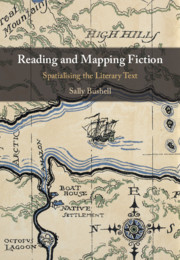Book contents
- Reading and Mapping Fiction
- Reading and Mapping Fiction
- Copyright page
- Dedication
- Contents
- Illustrations
- Acknowledgement of Prior Publications
- Acknowledgements
- Introduction
- 1 A Shifting Relationship: From Literary Geography to Critical Literary Mapping
- 2 Historicising the Fictional Map
- 3 Doubleness and Silence in Adventure and Spy Fiction
- 4 Mapping Murder
- 5 Playspace: Spatialising Children’s Fiction
- 6 Mapping Worlds: Tolkien’s Cartographic Imagination
- 7 Fearing the Map: Representational Priorities and Referential Assumptions
- 8 Reading As Mapping, or, What Cannot Be Visualised
- Bibliography
- Index
6 - Mapping Worlds: Tolkien’s Cartographic Imagination
Published online by Cambridge University Press: 11 June 2020
- Reading and Mapping Fiction
- Reading and Mapping Fiction
- Copyright page
- Dedication
- Contents
- Illustrations
- Acknowledgement of Prior Publications
- Acknowledgements
- Introduction
- 1 A Shifting Relationship: From Literary Geography to Critical Literary Mapping
- 2 Historicising the Fictional Map
- 3 Doubleness and Silence in Adventure and Spy Fiction
- 4 Mapping Murder
- 5 Playspace: Spatialising Children’s Fiction
- 6 Mapping Worlds: Tolkien’s Cartographic Imagination
- 7 Fearing the Map: Representational Priorities and Referential Assumptions
- 8 Reading As Mapping, or, What Cannot Be Visualised
- Bibliography
- Index
Summary
Chapter Six considers the importance of the map for Fantasy with particular reference to J. R. R. Tolkien as the creator of that genre. Tolkien’s cartographic imagination in the process of creative composition is unique so that the chapter is largely devoted to a full exploration of this. The chapter works across Tolkien’s compositional process, tracing his need to map in order to write. The final section of the chapter draws attention to a post-authorial context for literary mapping, reflecting the larger cultural power and influence of Tolkien’s maps. (89)
- Type
- Chapter
- Information
- Reading and Mapping FictionSpatialising the Literary Text, pp. 199 - 236Publisher: Cambridge University PressPrint publication year: 2020

